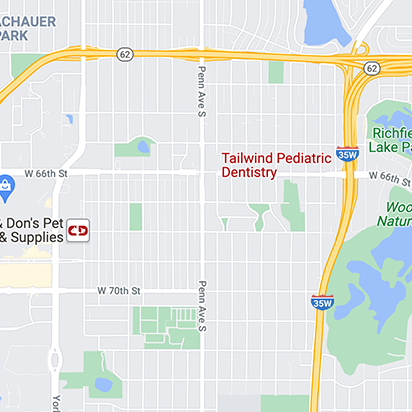Tongue-tie is a birth anomaly that occurs when the strip of skin (lingual frenulum) connecting a baby’s tongue to the floor of their mouth is shorter than usual. Typically, this strip of skin separates before birth, allowing the tongue free range of motion. With tongue-tie, the lingual frenulum remains attached to the bottom of the tongue.
Tongue-tie is a very common condition that, if addressed quickly, will not hinder a child’s development. However, if left untreated, tongue-tie can result in malnourishment, speech difficulty, or poor oral hygiene.
Signs of tongue-tie include:
- Restriction of the tongue’s movement, making it harder to breastfeed
- Difficulty lifting the tongue up or moving it from side to side
- Difficulty sticking the tongue out
- The tongue looks notched or heart-shaped when stuck out
Treatment of Tongue-Tie
The treatment of tongue-tie for infants and children is a simple surgical procedure called a frenectomy. Dr. Stephens will examine the lingual frenulum and then uses the state of the art SOLEA LASER to release the attachment. The Solea laser allow this procedure to be easy, quick, with little to no bleeding, and is usually done with only topical anesthetics.


